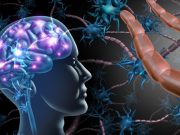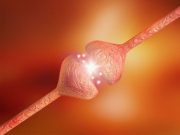Tag: Parkinson’s
Parkinsonism, Parkinson Disease Risk Up With Bilateral Oophorectomy Before 43
Risk increased in premenopausal women undergoing oophorectomy for benign indication before age 43 years
ENT-01 Safe, Improves Constipation in Patients With Parkinson Disease
Improvement seen in weekly complete spontaneous bowel movement rate and in secondary end points
Weight Loss in Early Parkinson Linked to Cognitive Decline
Patients with weight loss in first year have significantly faster decline in Montreal Cognitive Assessment scores
Hospital-Treated Infections Earlier in Life Tied to Alzheimer, Parkinson Disease Risk
Association found for Alzheimer and Parkinson disease cases diagnosed before 60 years of age
Monoclonal Antibodies No Better Than Placebo for Early Parkinson Disease
Two studies show lack of benefit in primary or secondary end points with cinpanemab or prasinezumab versus placebo
Genetic Mutations May Help Predict Survival in Parkinson Disease
Among patients with Parkinson disease, SNCA or GBA mutations associated with shorter survival compared with no mutations
Risk for Parkinson Disease Reduced After Myocardial Infarction
During median follow-up of 21 years, risk reduced for Parkinson disease, secondary parkinsonism after MI
Flavonoid Intake Linked to Mortality Risk in Parkinson Disease
Higher flavonoid intake after diagnosis of Parkinson disease linked to reduced risk for all-cause mortality
Regular Exercise Linked to Slower Deterioration in Parkinson Disease
Regular physical activity levels linked to slower deterioration of postural and gait stability, activities of daily living, processing speed
Dopamine Agonists, DRIs Similar for QoL in Parkinson Disease
No measurable difference in patient-rated quality of life seen for dopamine agonists versus dopamine reuptake inhibitors as adjuvant therapy














